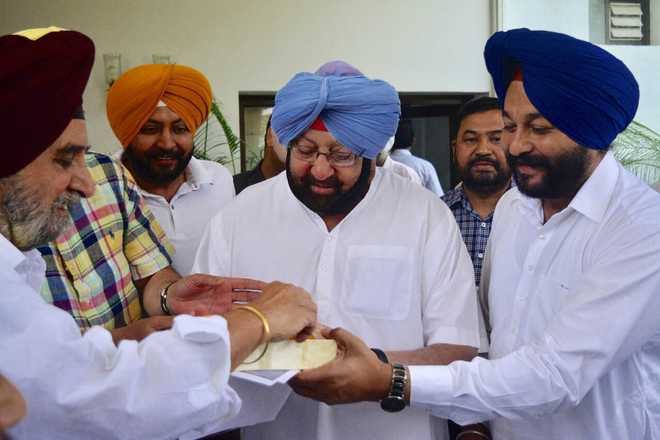Shahkot has important lessons both for SAD-BJP and AAP
Ruchika M Khanna
Tribune News Service
Chandigarh, May 31
The result of the Shahkot bypoll, which has swung in the ruling Congress’s favour, has important lessons for both Opposition parties--the SAD-BJP and AAP.
A margin of over 38,800—only 5,000 votes less than those polled by the second candidate--SAD-BJP’s Naib Singh Kohar--shows that the anti-incumbency against the SAD is far from over.
The seat had fallen vacant after the demise of SAD MLA Ajit Singh Kohar. But his son--who fared poorly even in his own village–could not get the voters’ sympathy. With the loss, the strength of the Akali Dal in the Vidhan Sabha has been reduced to 14 (17 for the SAD-BJP combine).
Though Akali leaders publicly claim that the reason they lost the bypoll is that there was too much government pressure on their workers, they also admit that there was anti-incumbency against Kohar, which was passed on to his son.
The leaders say that they have retained their party’s vote share. In the assembly election last year, the party had secured 46,913 votes, and this time they managed 43,945 votes, despite the government pressure.
They contend that while they have retained their vote share, it is the AAP vote share that has gone to the Congress. Against the 41,010 votes polled in favour of AAP in the 2017 assembly elections, the party candidate polled just 1,900 votes in the bypoll.
In case of AAP--which secured just 1,900 votes (632 more than NOTA)--the poll may not be the end of the road, but it certainly should be a turning point for a party that created ripples in Punjab polity just a year ago. The main reason for the poor showing in Shahkot is that the party leadership seemed to have left candidate Ratan Singh Kakar Kalan to fend for himself.
As against the entire council of ministers descending on Shahkot to campaign for party candidate Hardev Singh Ladi Sherowalia and Akali Dal president Sukhbir Singh Badal also campaigning vigorously for Kohar, both the state and national leadership of AAP were missing during the campaign. The drubbing suffered by the party was because of this “lack of support” as well as because of the poaching of many AAP leaders from the constituency by the Akali Dal and Congress.
Interestingly, in the past few bypolls held in Punjab, the ruling party has always won and with handsome margins. Though the Khadoor Sahib bypoll in 2016 was fought without the Congress fielding its candidate and the then ruling party winning by almost 67,000 votes; in Dhuri in 2015 the ruling party had won by 37,501 votes and in Talwandi Sabo in 2014 by a margin of 47,000 votes.
This said, the Congress strategy at Shahkot can’t be ignored. Though the election started on a negative note (the mining case being registered against the Congress candidate), the party managed to change the political narrative to a positive one by bringing in all its ministers and craftily attracting the AAP voters towards itself. Thus the party increased its own vote share by around 40,000 votes.









